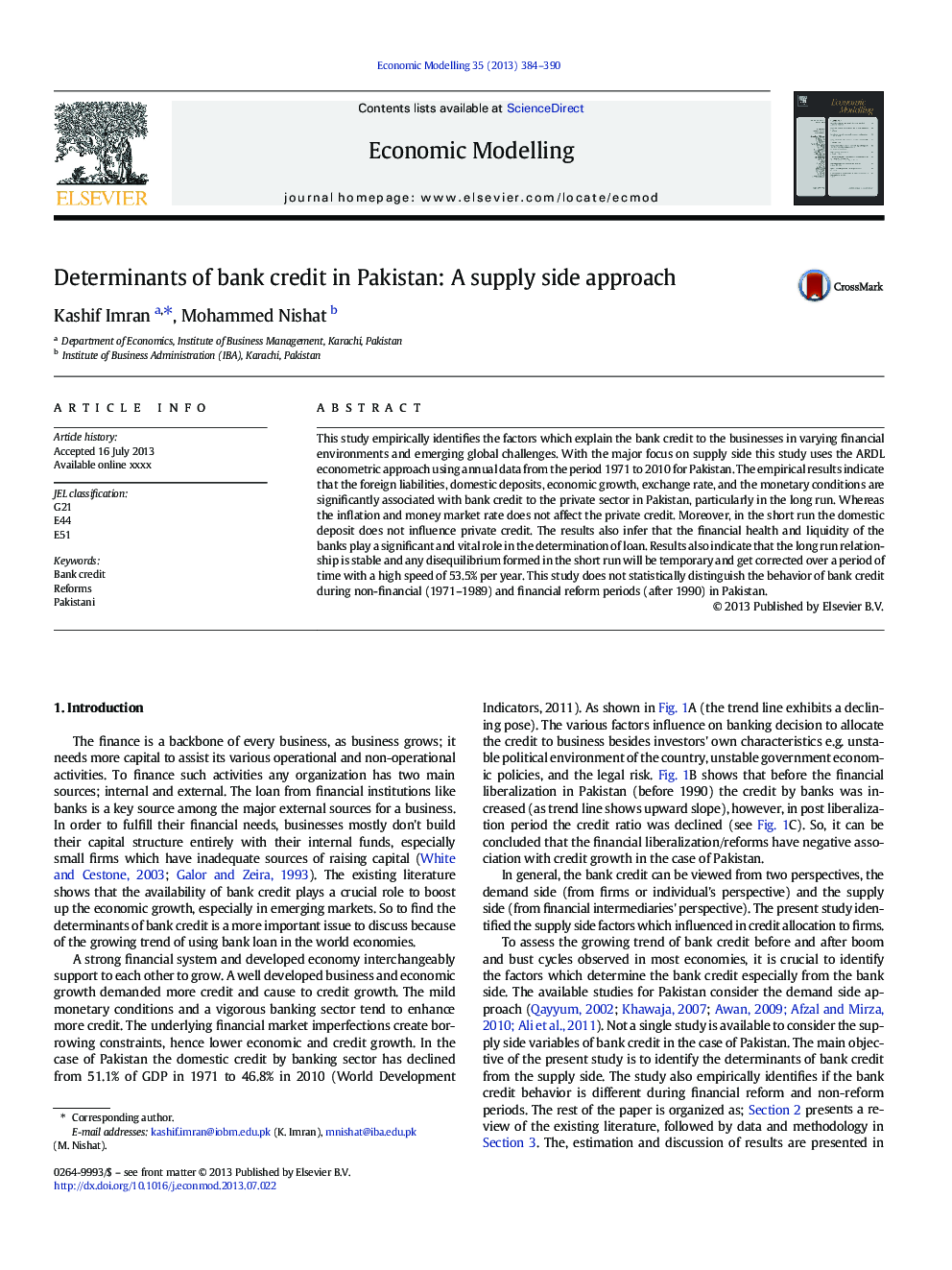| Article ID | Journal | Published Year | Pages | File Type |
|---|---|---|---|---|
| 5054627 | Economic Modelling | 2013 | 7 Pages |
Abstract
This study empirically identifies the factors which explain the bank credit to the businesses in varying financial environments and emerging global challenges. With the major focus on supply side this study uses the ARDL econometric approach using annual data from the period 1971 to 2010 for Pakistan. The empirical results indicate that the foreign liabilities, domestic deposits, economic growth, exchange rate, and the monetary conditions are significantly associated with bank credit to the private sector in Pakistan, particularly in the long run. Whereas the inflation and money market rate does not affect the private credit. Moreover, in the short run the domestic deposit does not influence private credit. The results also infer that the financial health and liquidity of the banks play a significant and vital role in the determination of loan. Results also indicate that the long run relationship is stable and any disequilibrium formed in the short run will be temporary and get corrected over a period of time with a high speed of 53.5% per year. This study does not statistically distinguish the behavior of bank credit during non-financial (1971-1989) and financial reform periods (after 1990) in Pakistan.
Related Topics
Social Sciences and Humanities
Economics, Econometrics and Finance
Economics and Econometrics
Authors
Kashif Imran, Mohammed Nishat,
